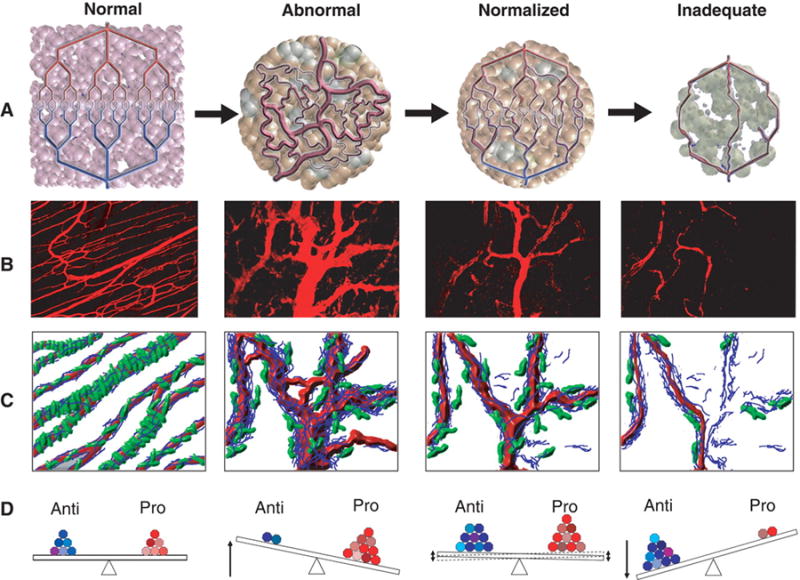Figure 1.

Normalization of tumor vasculature. (A) Tumor vasculature is structurally and functionally abnormal. One potential mechanism of action for antiangiogenic therapies is transient improvement in both the structure and the function of tumor vessels. However, sustained antiangiogenic treatment may eventually result in a vasculature that is both resistant to further treatment and inadequate for the delivery of drugs or oxygen. (B) Vessel structural patterns before, during and with sustained VEGFR2 blockade. (C) Diagram depicting the concomitant changes in pericyte coverage (green) and basement membrane thickness (blue) before, during and with sustained VEGFR2 blockage. (D) Changes in the balance of pro- and antiangiogenic factors leading to the phenotypic changes noted above. Reprinted from Jain (99).
